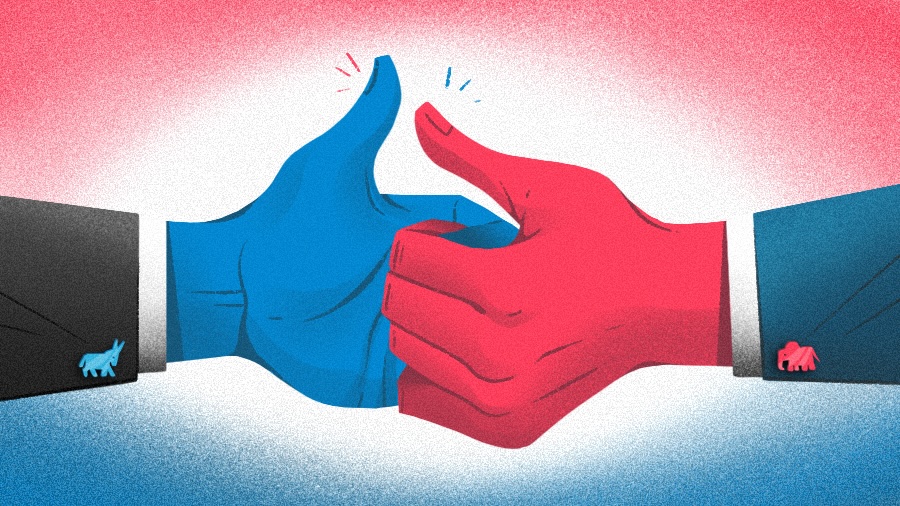U.S. startup investors don’t base funding decisions on who is in the Oval Office. But even so, election year uncertainties do appear to impact investment tallies.
That was the broad finding from a Crunchbase survey of U.S. startup funding for the past six presidential election cycles. Data showed that total investment across stages rose moderately to sharply in four post-election years.
To illustrate, we charted total investment for the past six election cycles below, showing both election year and post-election year tallies.
Post-election gains
The biggest jump was in 2021, the first year of the Biden administration, when global investment more than doubled year over year to hit an all-time high of $345 billion. That year’s investment frenzy coincided with a red-hot IPO market, soaring tech valuations, and some societal return to normal as pandemic-era disruptions eased.
The next-biggest jump was in 2017, the first year of the Trump administration, when funding rose 26% year over year to reach a total of $98 billion. That was also the year for some big late-stage rounds for prominent startups including WeWork, Uber and Lyft.
A not-too-distant third was 2013, the first year of President Barack Obama’s second term, when investment increased 20% to hit $48 billion. That was the year billion-dollar startups increasingly became a thing. This culminated in the introduction of the term “unicorn” to describe the group, which included well-known names such as Pinterest, Yelp and Palantir.
Post-election declines
There were two post-election years in our survey in which funding declined: 2001 and 2009. This coincided with two major shocks to the financial system: the bursting of the dot-com bubble and the Great Recession.
The biggest decline was in 2001, when investment plummeted in tandem with a market selloff for tech and internet companies. Stocks declined further in the wake of the Sept. 11, 2001, terrorist attacks. While it was also the first year of President George W. Bush’s first term, it appears that market dynamics rather than a change in presidential administration drove declines.
The same seems true for 2009, when Obama began his first term in the wake of a real estate crash and shocks to the financial system that sent markets spiraling lower. That year, startup investment fell 13% year over year and totaled around $26 billion.
Usually, funding goes up
Historically, up years do outnumber down years for venture capital funding.
This makes sense, as total U.S. venture investment has gone up over time. While there are some declines during economic rough patches, most years we see a rise in funding.
Given this backdrop, it’s not surprising that we see higher total funding tallies in post-election years. We could sometimes see extra momentum after an election, as these periods can signal a cultural vibe shift as well as the introduction of policy priorities that favor more investment in particular sectors or asset types.
As we look to 2025, one doesn’t have to be a crazy optimist to envision funding will rise. In particular, if the still-dormant tech IPO market revives, we can expect to see more large pre-IPO rounds. Although we may not retrace the 2021 highs for a while, there’s still plenty of room for growth ahead.
Related Crunchbase Pro list:
Related reading:
- These Are The Tech Companies That Went Public In 2021, A Record Year For IPOs
- Global Venture Funding And Unicorn Creation In 2021 Shattered All Records
- Do IPOs Pick Up In Post-Election Years?
Illustration: Dom Guzman

Stay up to date with recent funding rounds, acquisitions, and more with the Crunchbase Daily.



![Illustration of a guy watering plants with a blocked hose - Global [Dom Guzman]](https://news.crunchbase.com/wp-content/uploads/quarterly-global-3-300x168.jpg)
67.1K Followers